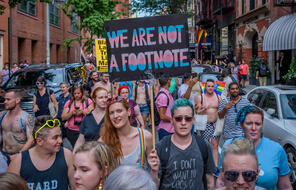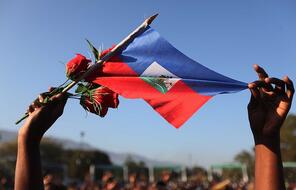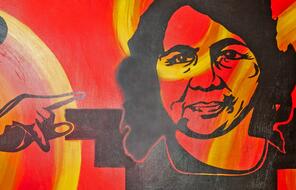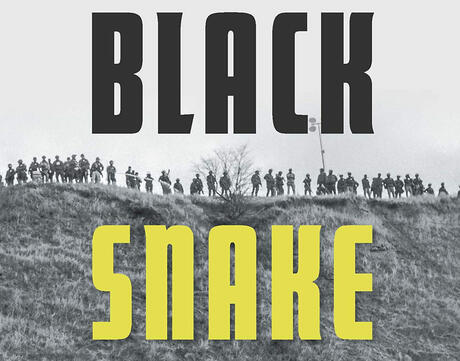
5 New Books on Native American History, Life, and Resistance
During Native American Heritage Month this November, educators are reminded of the importance of engaging students in exploring the histories and contemporary realities of Native American peoples all year. Yet one of the barriers to doing this well and with confidence is not having had sufficient exposure to this material as part of one’s own classroom education. There are a host of books and other materials that we can turn to in the ongoing learning and unlearning process that this task demands, and this learning is something we are engaged in at Facing History, too.
Members of our staff are exploring these five new books published within the last year and we invite you to explore them alongside us and share your learnings in the comments. These titles cover significant thematic ground including histories of violence and Native resistance in bordertowns; the power of art to sustain culture and identity within an Indian boarding school; a critical exploration of the absence of concepts of indigeneity from mainstream discussions of race and white supremacy in America; the Native alliance that coalesced to challenge the Dakota Access Pipeline and defend human rights; and efforts toward healing colonial violence advanced through a unique multi-year collaboration between Indigenous peoples and their allies. Below are excerpts from each text’s publisher:
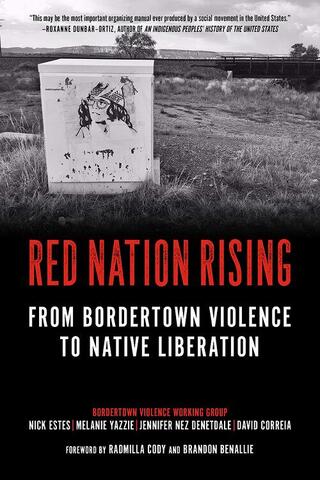
Red Nation Rising: From Bordertown Violence to Native Liberation
Red Nation Rising: From Bordertown Violence to Native Liberation
By Nick Estes
“Red Nation Rising is the first book ever to investigate and explain the violent dynamics of bordertowns. Bordertowns are white-dominated towns and cities... [situated] at the borders of current-day reservation boundaries, which separate the territory of sovereign Native nations from lands claimed by the United States. Bordertowns came into existence when the first US military forts and trading posts were strategically placed along expanding imperial frontiers to extinguish indigenous resistance and incorporate captured indigenous territories into the burgeoning nation-state… This explains why some of the most important Native-led rebellions in US history originated in bordertowns and why they are zones of ongoing confrontation between Native nations and their colonial occupier, the United States… Red Nation Rising marks the first effort to tell these entangled histories and inspire a new generation of Native freedom fighters to return to bordertowns as key front lines in the long struggle for Native liberation from US colonial control.” -- PM Press
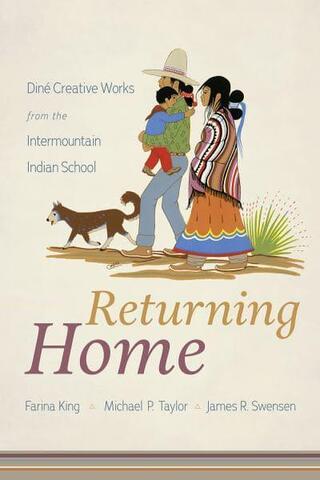
Returning Home: Diné Creative Works from the Intermountain Indian School
Returning Home: Diné Creative Works from the Intermountain Indian School
By Farina Noelani King
“Returning Home features and contextualizes the creative works of Diné (Navajo) boarding school students at the Intermountain Indian School, which was the largest federal Indian boarding school between 1950 and 1984. Diné student art and poetry reveal ways that boarding school students sustained and contributed to Indigenous cultures and communities despite assimilationist agendas and pressures. This book works to recover the lived experiences of Native American boarding school students through creative works, student interviews, and scholarly collaboration. It shows the complex agency and ability of Indigenous youth to maintain their Diné culture within the colonial spaces that were designed to alienate them from their communities and customs.” -- Bison Books

Settler Memory: The Disavowal of Indigeneity and the Politics of Race in the United States
Settler Memory: The Disavowal of Indigeneity and the Politics of Race in the United States
By Kevin Bruyneel (available November 8, 2021)
“Faint traces of Indigenous people and their histories abound in American media, memory, and myths. Indigeneity often remains absent or invisible, however, especially in contemporary political and intellectual discourse about white supremacy, anti-Blackness, and racism in general. In this ambitious new book, Kevin Bruyneel confronts the chronic displacement of Indigeneity in the politics and discourse around race in American political theory and culture, arguing that the ongoing influence of settler colonialism has undermined efforts to understand Indigenous politics while also hindering conversation around race itself… Bruyneel challenges readers to refuse settler memory and consider a third reconstruction that can meaningfully link antiracism and anticolonialism.”
-- University of North Carolina Press
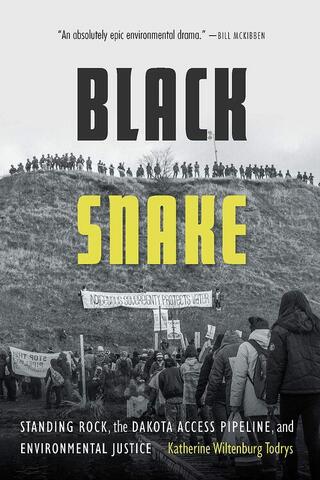
Black Snake: Standing Rock, the Dakota Access Pipeline, and Environmental Justice
Black Snake: Standing Rock, the Dakota Access Pipeline, and Environmental Justice
By Katherine Wiltenburg Todrys
“The controversial Dakota Access Pipeline (DAPL) made headlines around the world in 2016… Native activists named it the ‘black snake,’ referring to an ancient prophecy about a terrible snake that would one day devour the earth. Activists rallied near the Standing Rock Reservation in North Dakota for months in opposition to DAPL, winning an unprecedented but temporary victory before the federal government ultimately permitted the pipeline... The water protector camps drew global support and united more than three hundred tribes in perhaps the largest Native alliance in U.S. history [and] has become one of the most crucial human rights movements of our time. Black Snake is the story of four leaders—LaDonna Allard, Jasilyn Charger, Lisa DeVille, and Kandi White—and their fight against the pipeline. It is the story of Native nations combating environmental injustice and longtime discrimination and rebuilding their communities. It is the story of a new generation of environmental activists, galvanized at Standing Rock, becoming the protectors of America’s natural resources.”
-- Bison Books

The Gatherings: Reimagining Indigenous-Settler Relations
The Gatherings: Reimagining Indigenous-Settler Relations
By Shirley Hager and Mawoipyane
“Thirty years ago, in Wabanaki territory – a region encompassing the state of Maine and the Canadian Maritimes – a group of Indigenous and non-Indigenous individuals came together to explore some of the most pressing questions at the heart of Truth and Healing efforts in the United States and Canada. Meeting over several years in long-weekend gatherings, in a Wabanaki-led traditional Council format, assumptions were challenged, perspectives upended, and stereotypes shattered… The Gatherings tells the moving story of these meetings in the words of both Indigenous and non-Indigenous participants. Reuniting to reflect on how their lives were changed by their experiences and how they continue to be impacted by them, the participants share the valuable lessons they learned. To reflect the collaborative nature of this project, the word Mawopiyane is used to describe the full group of co-authors. Mawopiyane, in Passamaquoddy, literally means ‘let us sit together,’ but the deeper meaning is of a group coming together, as in the longhouse, to struggle with a sensitive or divisive issue – but one with a very desirable outcome. It is a healing word and one that is recognizable in all Wabanaki languages.”
-- Aevo UTP




